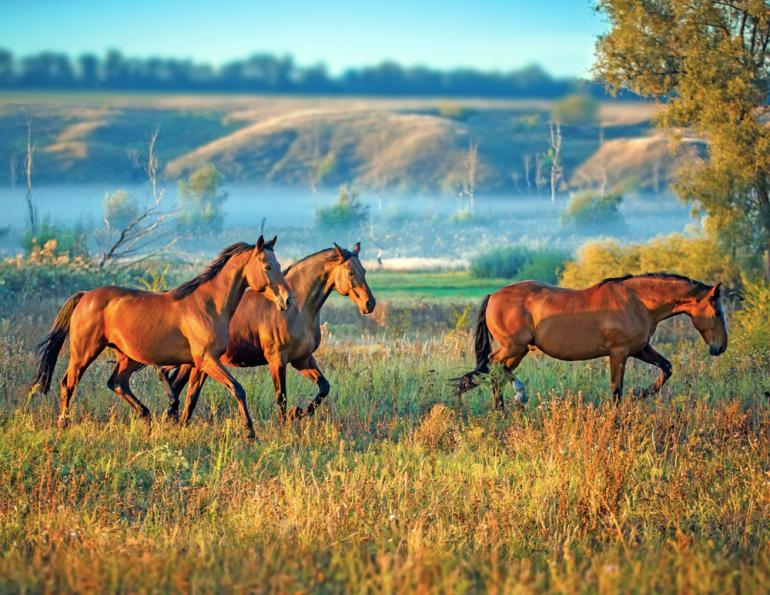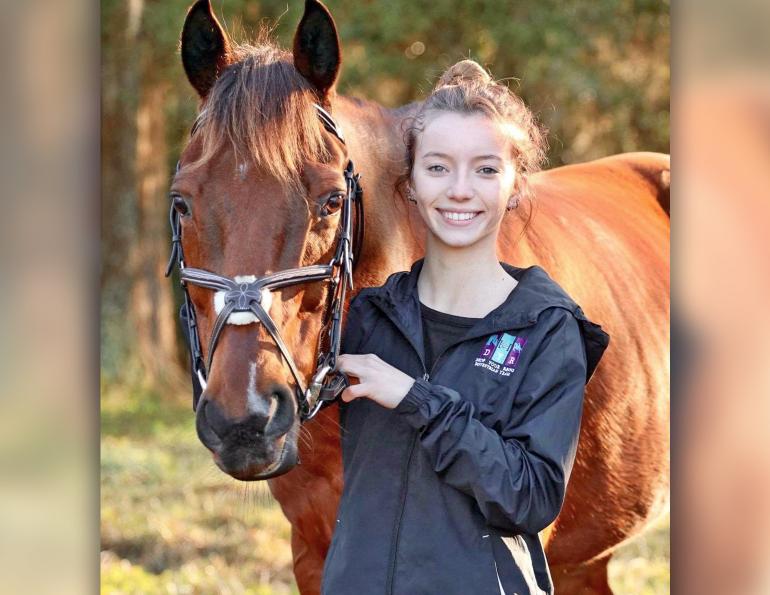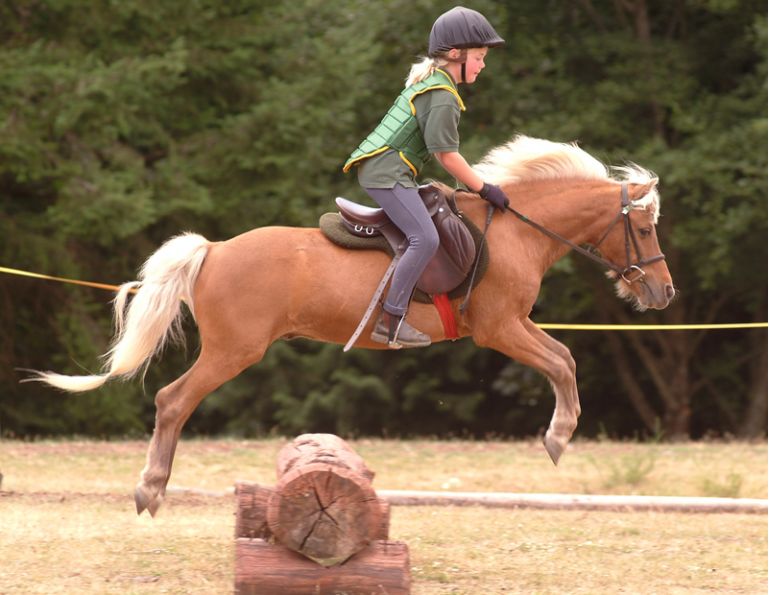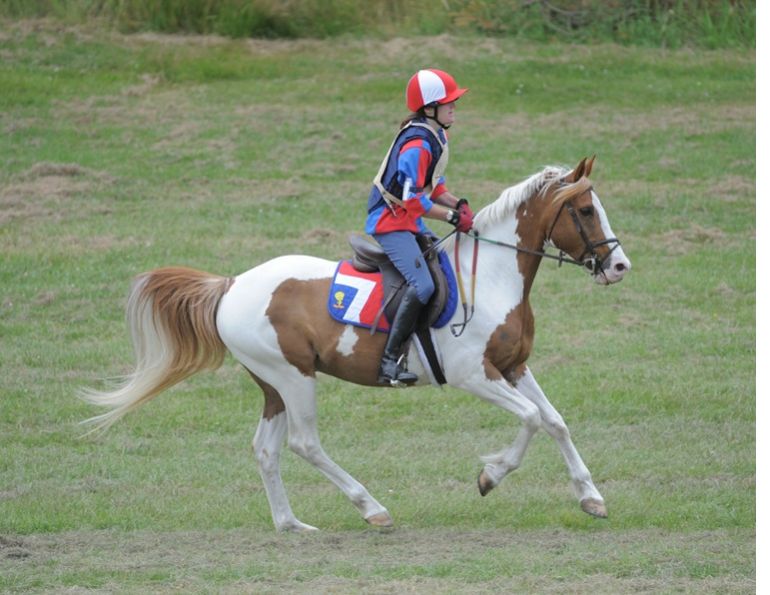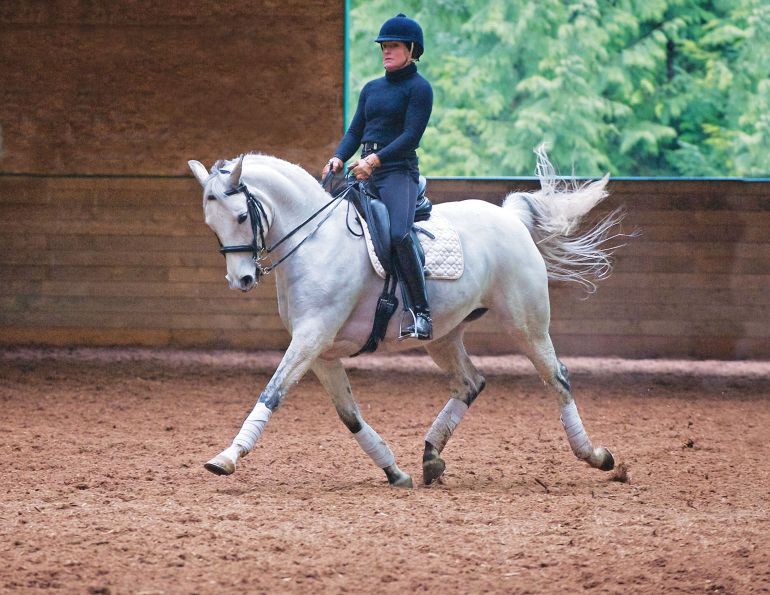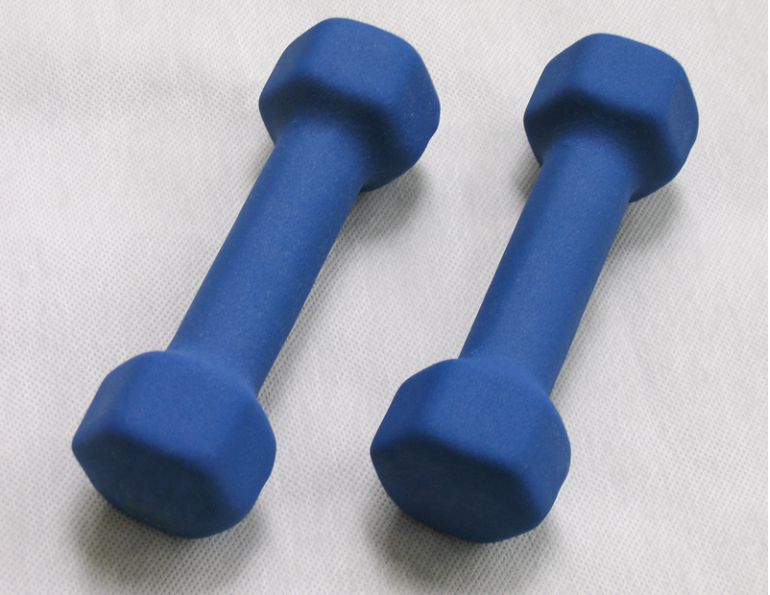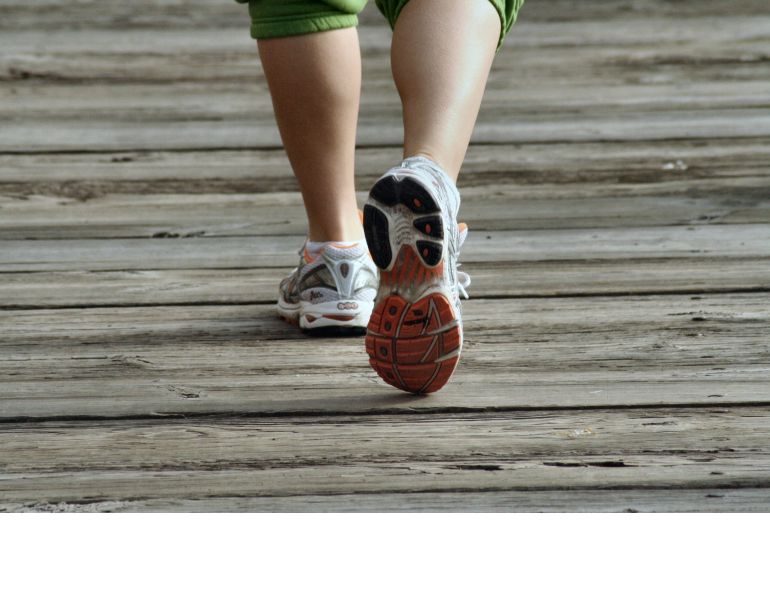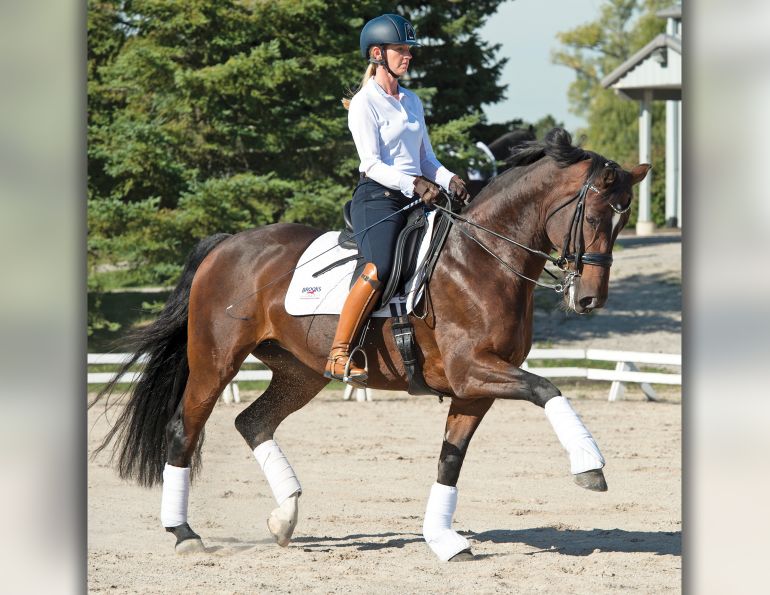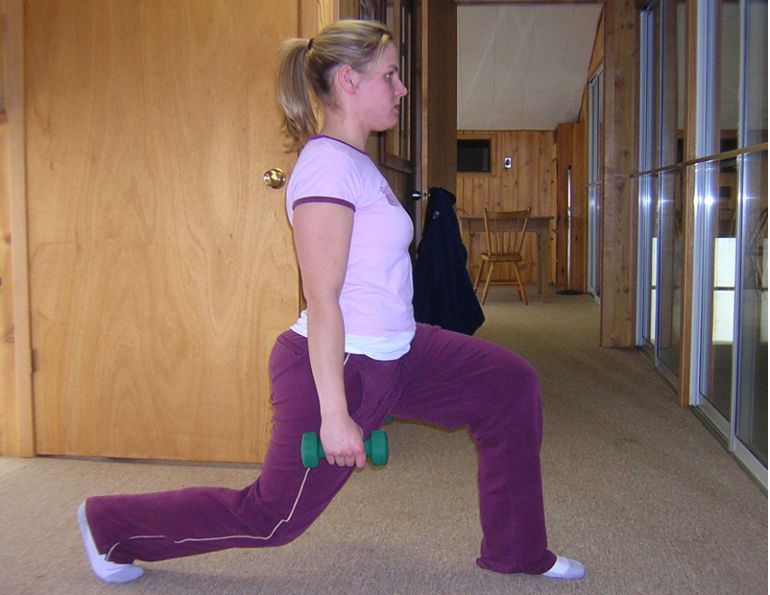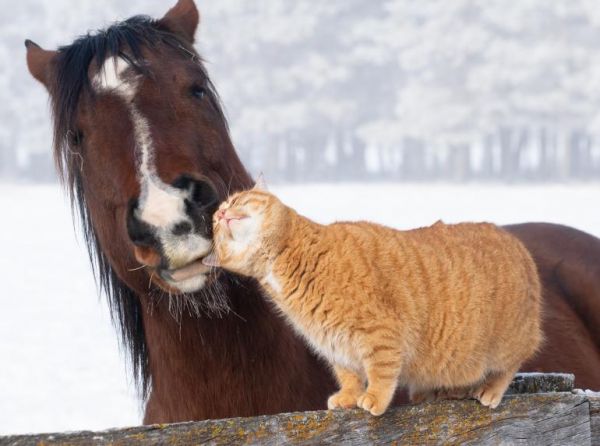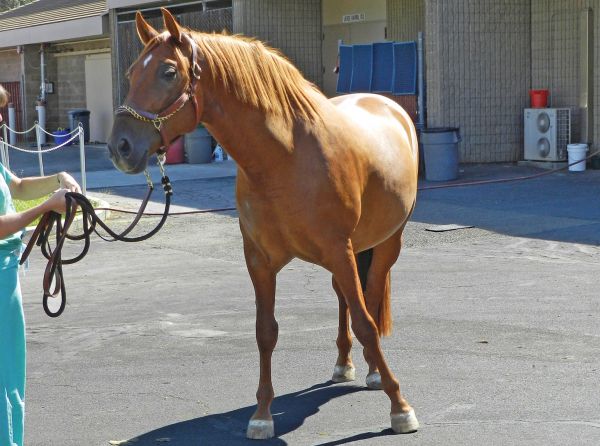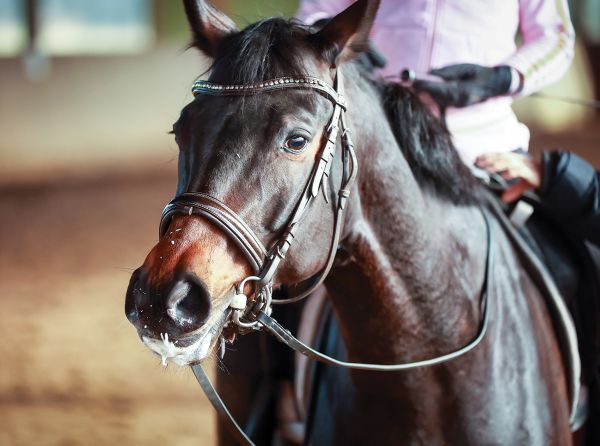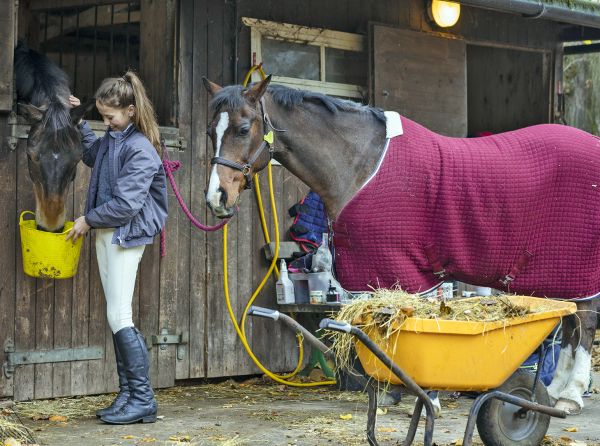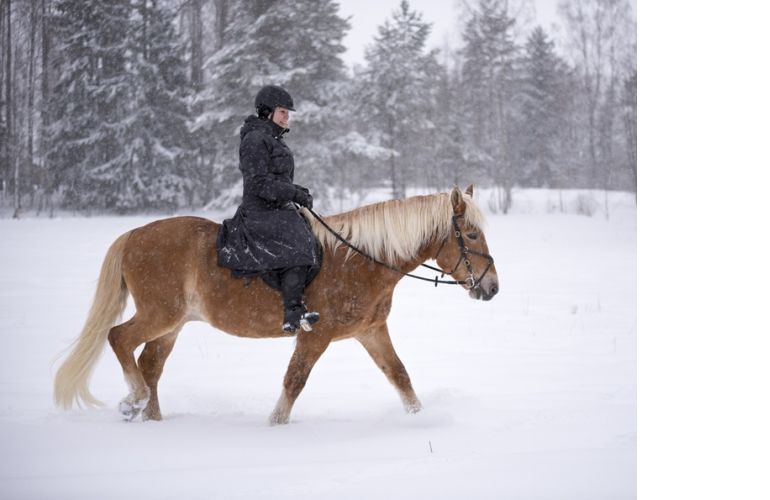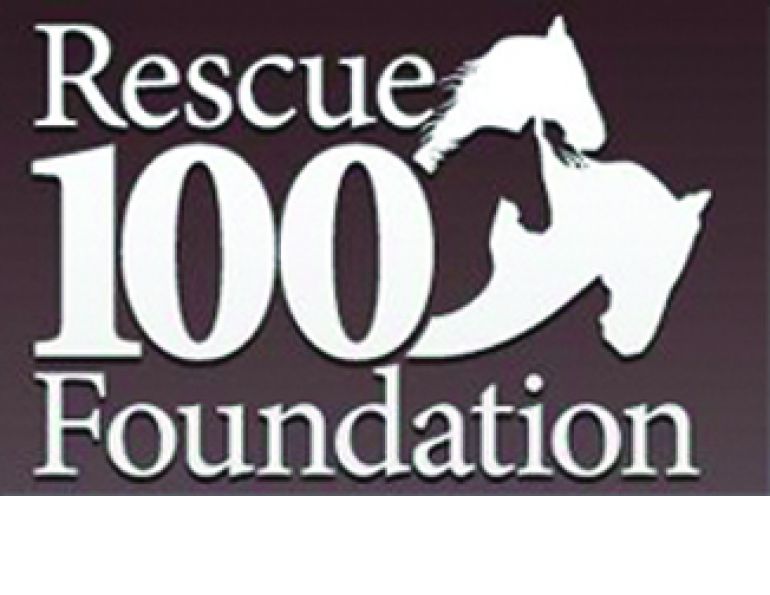By Sandra Verda-Zanatta
SVZ Dressage & F2R Fit To Ride Pilates for Equestrians
Calling all young riders! It’s time for some Fit To Ride Fun! This article is for those of you who want to have fun, improve your riding, and ensure your horses are happy and comfortable.
Importance of Fitness for Young Riders
In general, movement and physical activity promote good mental and physical health, supporting motor skill development and social interaction. From exercises on and off the horse to interactive games and arena patterns, there are many ways to improve your posture, balance, coordination, and overall fitness. As coaches and parents, recognizing that when youth associate exercise with enjoyment and fun rather than obligation they are more likely to be active throughout their teens and beyond. Explaining to young riders the benefits of fitness for themselves and their horses can help to build a foundation for a positive partnership and encourage life-long habits of physical activity and longevity in sport.
Equestrian sports require riders of all levels to have core strength, balance, flexibility, and coordination. These skills are crucial to improve rider posture, alignment, and overall performance while promoting safety and horse well-being. A fit rider is better equipped to communicate effectively with their horse and maintain balance and symmetry while mounted.
A strong core is a key component for developing a stable, effective riding position. Core strength helps maintain stability in the saddle, enables better balance, and minimizes the risk of injury. Maintaining dynamic balance and having flexibility are also key factors for upright posture and an independent seat. A combination of stability and relaxation promotes fluidity, improving the rider’s ability to follow the horse’s movement with ease. Seat independence gives riders the opportunity to develop “feel” and elasticity through their arms allowing consistent rein contact, while simultaneously using their seat and legs to influence the horse’s tempo, direction, and balance.
Be Balanced For Your Horse’s Sake
Being balanced in the saddle and developing an independent seat allows the rider’s weight to be distributed evenly on the horse’s back. Rider balance and symmetry directly influence the horse’s physical development and affect training progress. When a rider is off-balance, sitting or leaning to one side, it can cause discomfort, potentially leading to muscle soreness, gait irregularity, and sometimes injury. Imagine how uncomfortable, fatigued, and muscle-sore you would be if you had to walk or run up a hill carrying a backpack that was heavy and hanging off to one side. This is similar to what a horse feels when carrying an unbalanced, uncoordinated rider for an extended period of time.
Furthermore, consistent imbalances in the rider’s position can eventually lead to issues such as muscle asymmetry, back pain, or joint stiffness in both horse and rider. Being fit, developing body awareness, and working towards being a balanced rider can minimize potential problems and aid in the development of the horse-and-rider partnership. An independent seat can help the horse build strength, flexibility, and coordination evenly on both sides, resulting in a more balanced and supple equine athlete.
Balanced Riders Support Horse Well-Being
Along with the physical development of the horse, a balanced rider also directly affects the horse’s mental welfare and willingness to work with the rider. The bond between horse and rider is crucial to success in both training and in competition. A horse that is uncomfortable or in pain will often approach their training session with anticipation of discomfort resulting in tension and negative behaviours, and over time they may develop other health issues such as ulcers. The significance of a rider’s physical fitness in achieving a cohesive partnership with their equine partner and realizing optimal performance is often overlooked. Whether you’re a high-performance competitor or a recreational rider, prioritizing fitness can support your journey by enhancing your riding experience and improving your skills, while helping promote the safety and well-being of both you and your horse.
Related: Breathe Right for Better Horse Riding
As a young equestrian, investing in your fitness by incorporating strength, balance, flexibility, and coordination training into your routine is invaluable in helping you become a more confident, capable rider while fostering a deeper connection with your horse. The benefits of taking care of yourself and prioritizing your fitness extend far beyond the competition ring or trails. Integrating fitness into your daily routine is easy. Coaches can also encourage riders to have a pre-ride routine involving two or three exercises with a partner to promote fun and teamwork. Keeping exercise for youth fun and interactive can develop a lifelong love for both horses and physical activity, and establish trust and camaraderie with fellow riders.
This article shares some fun exercises you can do with your friends at the barn to improve your core strength, balance, and coordination!
Riding Position with Flex Band Reins

- Stand facing your partner with knees bent slightly and shoulders flat on your back;
- Hold the flex band like reins with arms/hands in riding position, practice fluidly keeping slight tension on the band while drawing your belly button towards your spine to engage your core and moving hands forward and back.
Related: How to Fall off a Horse
Riding Position on Balance Discs with Flex Band Reins

- Same as Riding Position with Flex Band Reins (above) on Balance Discs
Bouncing Ball with Flex Band Reins

- Sit on the ball facing your partner, hold flex band like reins, and gently start bouncing on the ball with your core engaged and your seat maintaining contact with the ball at all times. Count the two-beat rhythm of trot to keep in unison with your partner, keeping slight tension on the flex band, and practice opening rein (external rotation) with elbows staying elastic (opening and closing as you bounce).
Related: Fitness for Kids
Back-to-Back Ball Squats
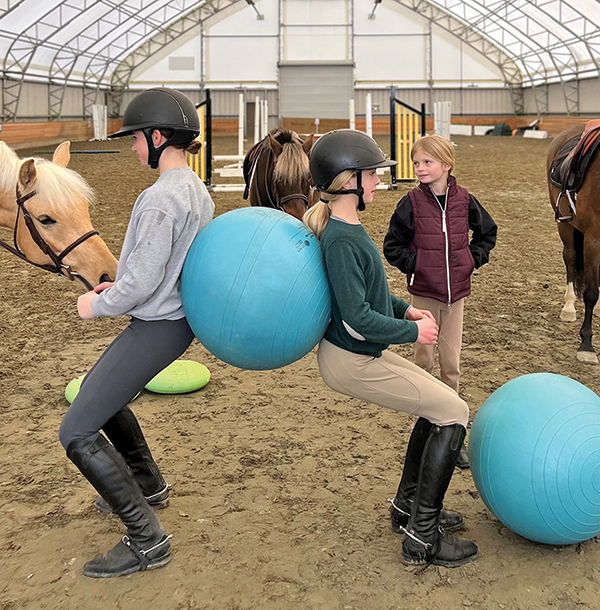
- With the ball between you, stand back-to-back with your partner, feet hip-width apart, knees slightly bent, shoulders back.
- Keeping your upper body tall and straight, push gently into the ball without leaning back, and draw your belly button towards the ball to engage your core.
- Holding arms and hands in riding position, do 10 squats in unison with your partner without dropping the ball. Repeat three times.
Note: You can also place a flex band around your back and hold the ends like reins in riding position, and as you squat you press hands forward stretching the band.
Core Awareness with Fitness Circle
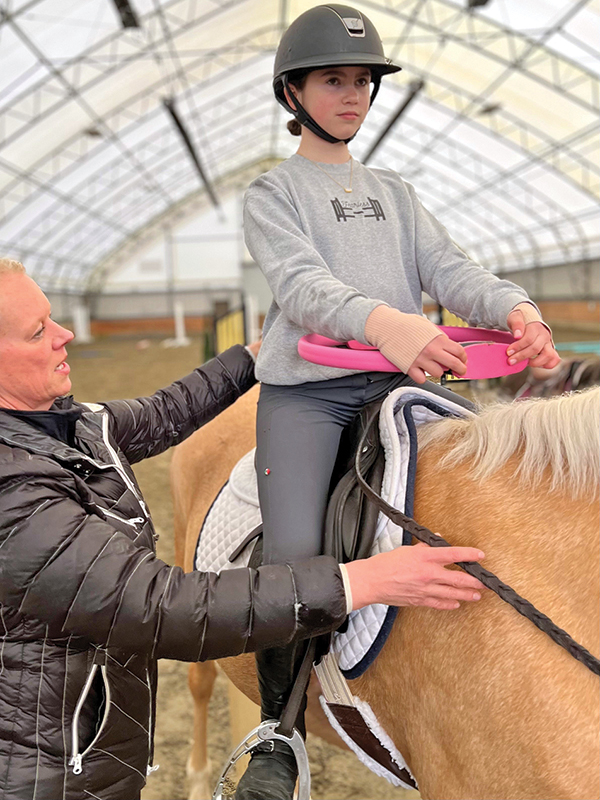
- Hold fitness circle just below belly button, press inward with hands while keeping shoulders flat on your back and core engaged;
- You can do this standing in riding position or mounted as shown above.
Note: Make sure your pony is comfortable with any exercise equipment you are using, and someone is holding your pony for safety.
Related: Rider Posture - What is Actually Involved?
Core Awareness and Oblique Rotations with Fitness Circle

- Same as Core Awareness with Fitness Circle above
- Then rotate to one side focusing on keeping seat bones equal in the saddle and shoulders square; the fitness circle should stay in the middle of your body; grow tall through the top of your head as you rotate;
- Return to centre and rotate to the other side, repeat each side eight times.
Note: On a safe, reliable pony with someone leading, this exercise can also be done at the walk.
Related: Support Your Back When Riding Horses
One Leg Standing Balance
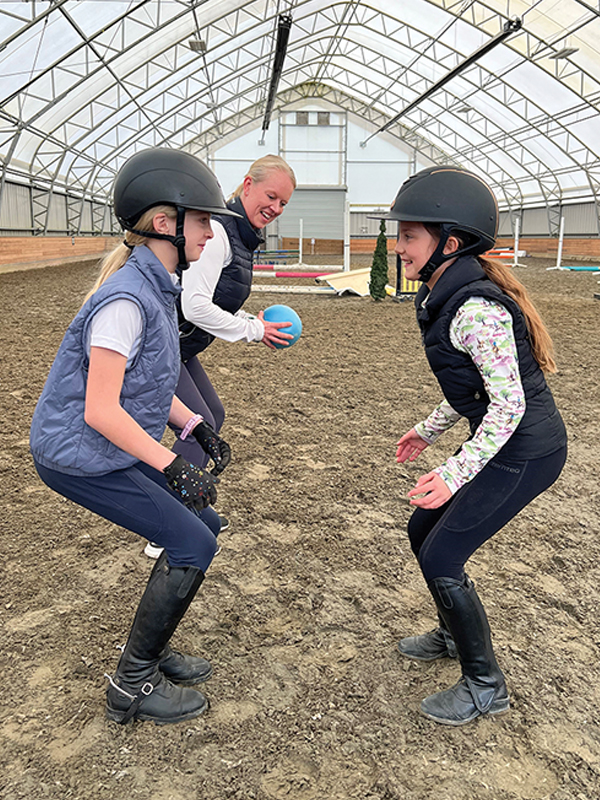
- Start facing your partner; bend knees slightly and lean forward with your upper body by closing your hip angle. Hold hands, draw your belly button in towards your spine to help stabilize your core to stay balanced, lift one leg off ground and extend it back, holding for five seconds — count out loud together.
- Extend leg three times, then switch legs and repeat.
Related: Mounted Exercises to Improve a Horse Rider's Seat and Effectiveness
One Leg Standing Balance with Flex Bands

- Same as One Leg Standing Balance above
- Hold flex bands like reins and practice moving hands forward and back following your partner (you can extend your leg or hold it in bent-knee position off the ground) maintaining balance for 10 seconds each leg
- Repeat three times.
One Leg Standing Balance with Ball Toss

- Same as One Leg Standing Balance above
- Toss ball back and forth to your partner maintaining balance for 10 seconds each leg;
- Repeat three times.
Related: Pilates for Every Equestrian
Related: High Performance Values for Equestrians
Photos are courtesy of Sandra Verda-Zanatta




